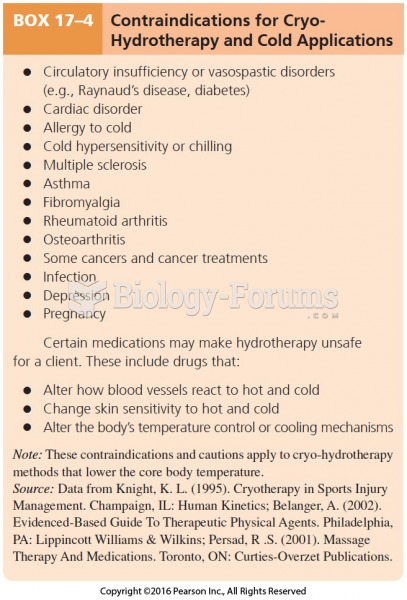|
|
|
All patients with hyperparathyroidism will develop osteoporosis. The parathyroid glands maintain blood calcium within the normal range. All patients with this disease will continue to lose calcium from their bones every day, and there is no way to prevent the development of osteoporosis as a result.
There are immediate benefits of chiropractic adjustments that are visible via magnetic resonance imaging (MRI). It shows that spinal manipulation therapy is effective in decreasing pain and increasing the gaps between the vertebrae, reducing pressure that leads to pain.
Blood in the urine can be a sign of a kidney stone, glomerulonephritis, or other kidney problems.
The average adult has about 21 square feet of skin.
In most cases, kidneys can recover from almost complete loss of function, such as in acute kidney (renal) failure.







